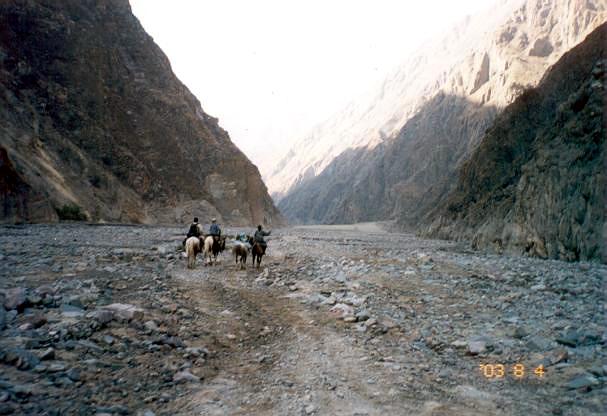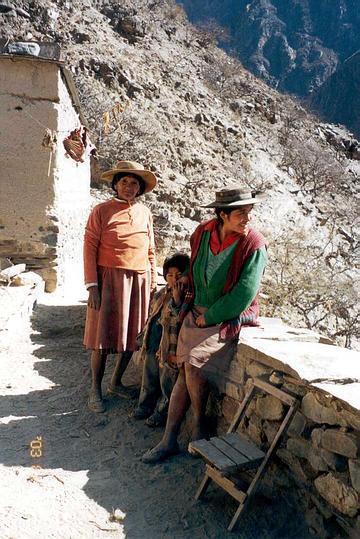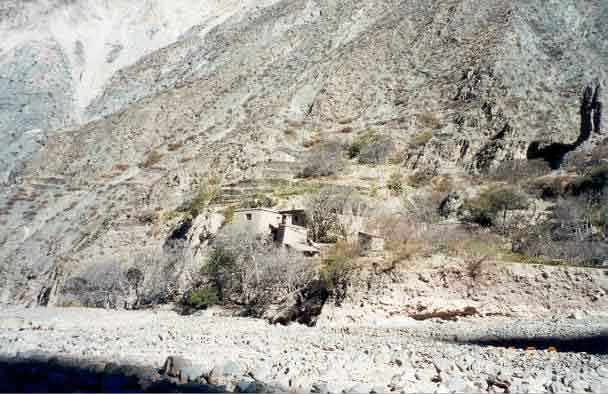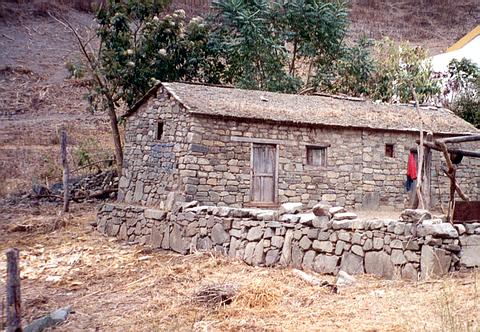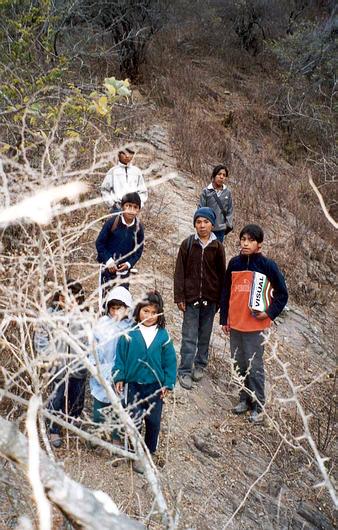Without having completely recovered from seeing this particular phenomenon, this town covered and destroyed by the volcan of a river, we found the narrow of Cebilar. The slopes were getting crowded with forest and small pink spots appeared, uncovering Lapachos showing the first colors of the incipient Spring. We ran into some locals who tirelessly drove a barren of mules, loaded with blocks of salt and orange bags, up the river to Higuera, seeking to exchange this precious cargo for merchandise of their interest.
Further on, a battered pedestrian bridge made with sticks betrayed the proximity of a village. We were approaching Matancillas, a small village nestled in a valley next to the river. We dismounted, and one after another the animals scurried uphill in search of the town; we stretched our legs and imitated them. Up above, we found a nice town, a tiny and modest chapel, a modern sanitary outpost, and a school in the final phase of its construction.
We unsaddled, turned out the horses by a neighboring fence with good fodder, and prepared our things for the night. In the kitchen of the sanitary outpost, we put firewood in the fireplace and grilled a goat kid that had accompanied us, already butchered, all the way from Iruya. The kitchen was a shed made of wood with a rudimentary roof that keeps the fire always on; this kitchen arrangement was not just part of the new sanitary outpost, but of the historic culture of these villages, in which similar kitchens are not missing in any dwelling.
Visiting the town, we observed curious and neat stone constructions. The lintels of doors and windows in most of the houses had changed from stone to well chopped and edged wooden beams, some with curiously carved works. The stone had been worked with even more care and tidiness. The wood was abundant, predominantly Cebil colorado alongside Tipas, Alisos, Quinas, Lapachos and many other varieties.

